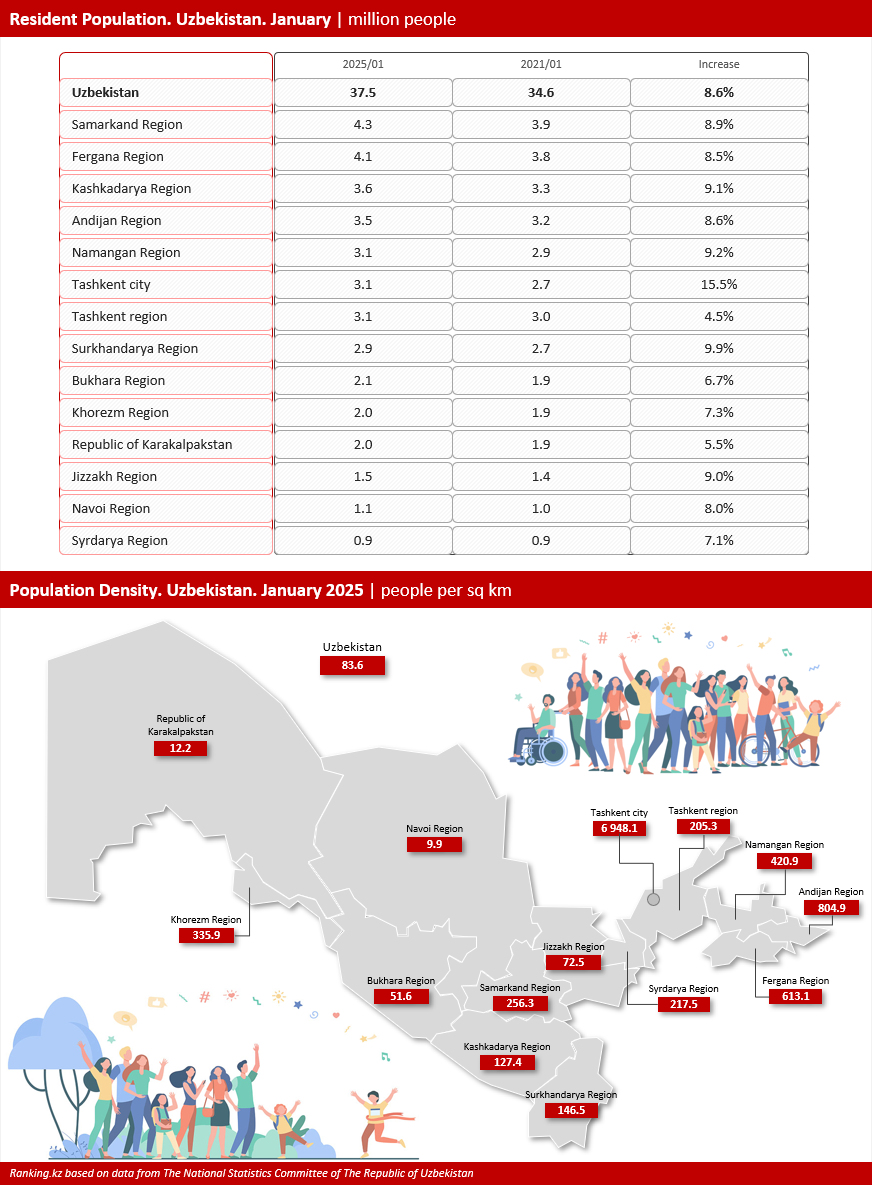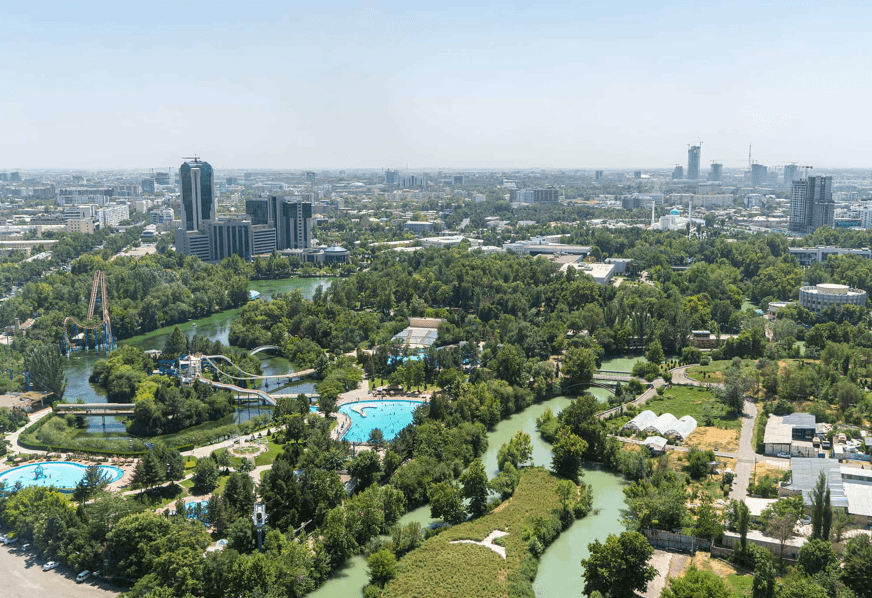What does the demographic map of Central Asia’s most populous country look like?
Uzbekistan is notable for its large population and substantial share of working-age citizens. According to the methodology used by the National Committee on Statistics of Republic of Uzbekistan, this category includes men aged between 16 and 60, and women aged between 16 and 55.
It is worth mentioning that, over recent years, the share of the working-age population within the total population has slightly decreased. So, if in 2013 this share reached 61.7% (that was a peak), by January 2024 it had declined by 5 percentage points. Currently it is standing at 56.4%. An important detail to note: nearly a third of Uzbekistan's citizens are children (32% of the total population), while elderly citizens account for 11.6%.
Why is this demographic indicator so critical? According to expert assessments by the United Nations Population Fund (UNFPA), the proportion of the working-age population largely determines a country’s potential to reap demographic dividends — possibilities of economic growth driven by the effective utilization of human resources. Therefore, the optimal scenario is when working-age individuals outnumber dependents. UNFPA specialists forecast that Uzbekistan’s demographic window of opportunity will last until 2050.

An important remark: although the indicator has slightly decreased in recent years, Uzbekistan’s working-age population share has consistently remained above 50%. The forecasts by international experts are supported by current birth rates and child population statistics published by the National Committee on Statistics of Republic of Uzbekistan. Like this, for example, last year, the number of minors in Uzbekistan was 12.9 million, with 5.3 million of them aged between 8 and 15. This means these boys and girls will soon join the ranks of Uzbekistan’s working-age citizens.
Thanks to high birth rates, the country will not experience a shortage of young people. Uzbekistan’s birth rate remains high, with over 900 thousand newborns annually. Statisticians noted a baby boom peak in 2023, when 962 thousand infants were born. Last year saw only a slight decline of 3.7%.

Overall, the country’s population has shown predictable growth in recent years. Since 2021, the number of citizens has been increasing by approximately 2% annually. At the beginning of this year, Uzbekistan reaffirmed its status as Central Asia’s most populous country, with a population reaching 37.5 million. Compared to 2021, this growth rate appears impressive, with an increase of 8.6%.
Demographic changes have been uneven across different regions. Growth has been considerably slower in areas with lower levels of economic development. For example, in the Republic of Karakalpakstan, the population increased only by 5.5%. Despite being the largest region by area, it has the lowest population density, with just 12.2 people per sq km.
Tashkent emerged as the leader in population growth during this period. Since 2021, the capital’s population has increased by 15.5%, reaching 3.1 million people. Demographically, Uzbekistan’s capital exemplifies a classic picture of active urbanization. This year, population density in the metropolis reached 6,9 thousand people per sq km, compared to the national average of 83.6.



